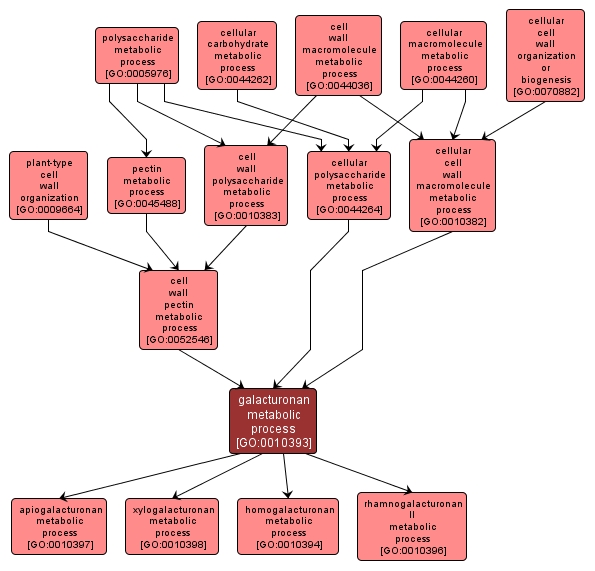GO TERM SUMMARY
|
| Name: |
galacturonan metabolic process |
| Acc: |
GO:0010393 |
| Aspect: |
Biological Process |
| Desc: |
The chemical reactions and pathways involving galacturonan, a pectin polymer containing a backbone of alpha-(1->4)-linked D-galacturonic acid residues. |
| Synonyms:
|
|

|
INTERACTIVE GO GRAPH
|














